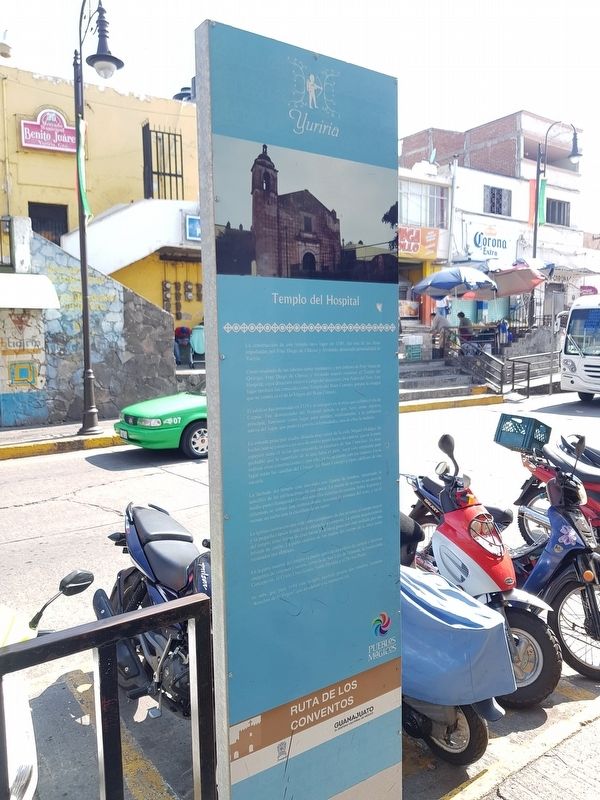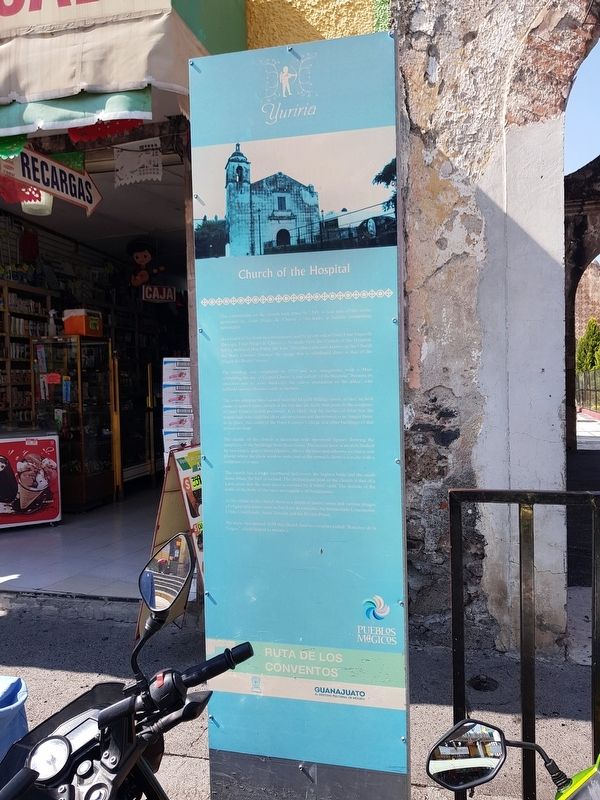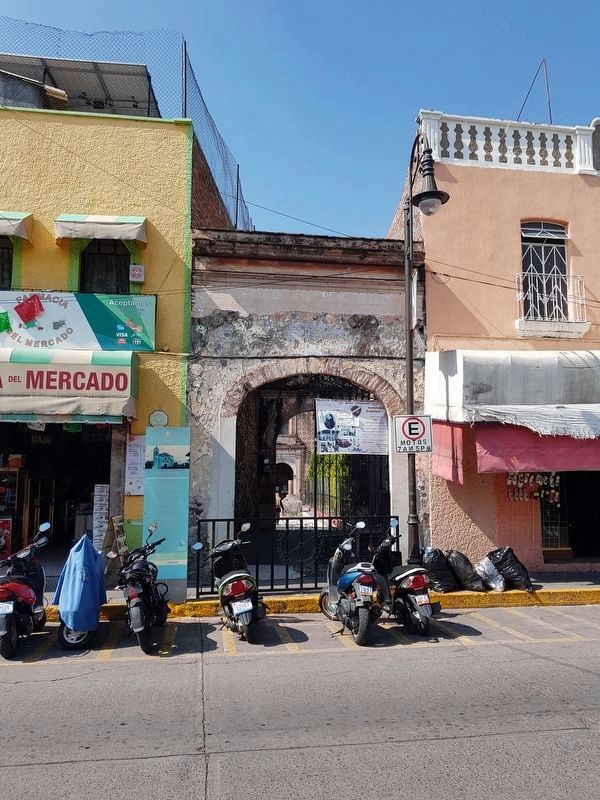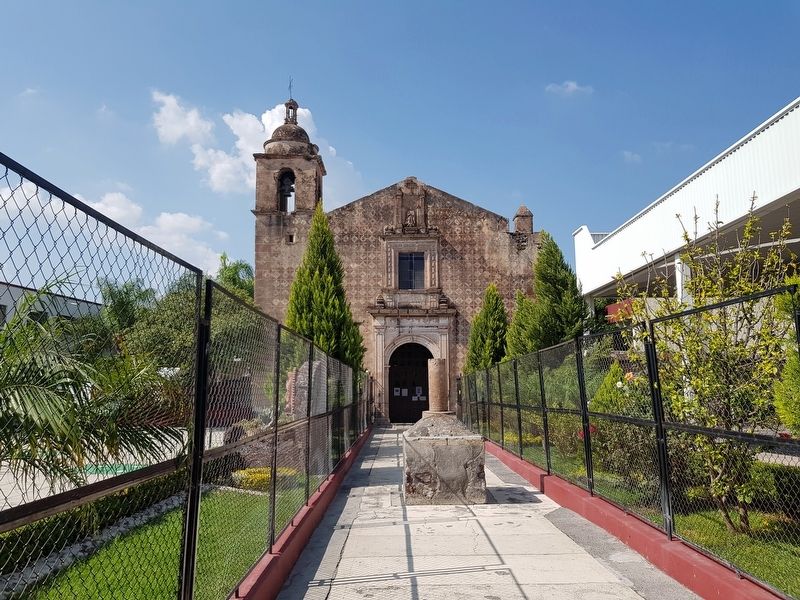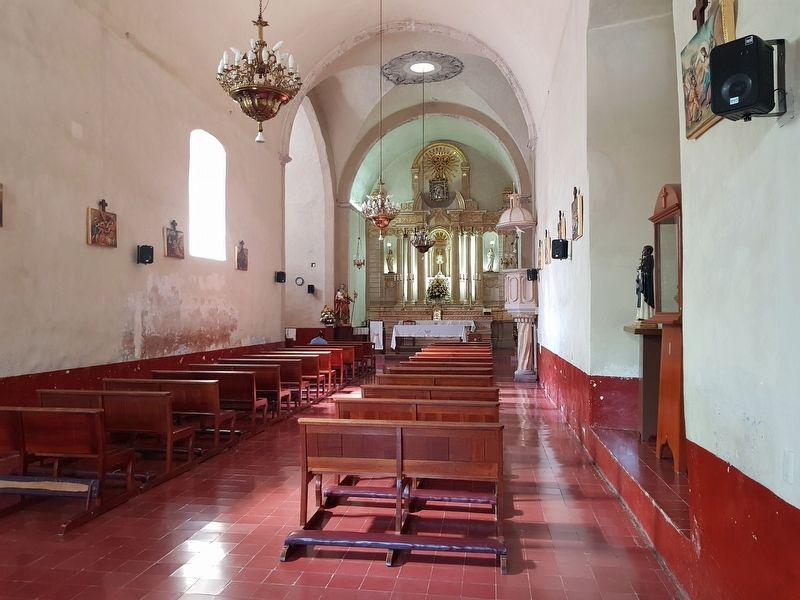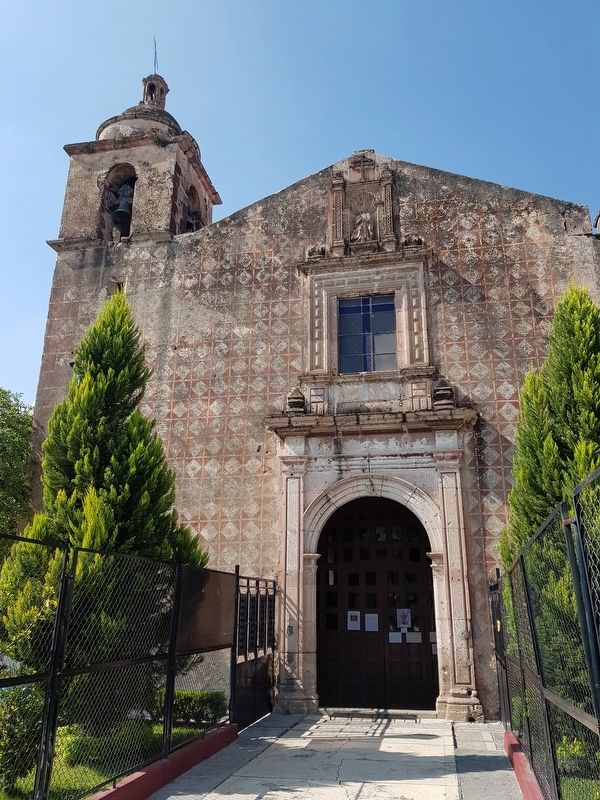Yuriria, Guanajuato, Mexico — The Central Highlands (North America)
Church of the Hospital
Ruta de los Conventos - The Convent Route
La construcción de este templo tuvo lugar en 1549, fue una de las obras impulsadas por Fray Diego de Chávez y Alvarado, destacada personalidad de Yuriria.
Como resultado de sus labores como misionero, y por ordenes de Fray Vasco de Quiroga, Fray Diego de Chávez y Alvarado mandó construir el Templo del Hospital, cuya dirección estuvo a cargo del arquitecto Don Pedro del Toro. Este lugar también fue conocido como Templo del Buen Consejo, porque la imagen que se venera es el de la Virgen del Buen Consejo.
El edificio fue terminado en 1559 y se inauguró en la misa que celebra el día de Corpus. Fue denominado del Hospital debido a que, tuvo como objetivo principal, funcionar como lugar para atender, medicamente, a la población nativa del lugar, que padeció graves enfermedades, una de ellas la malaria.
La entrada principal estaba ubicada muy cerca de la calle Miguel Hidalgo, de hecho, aún se conserva un arco de medio punto hecho de cantera, que en la parte superior tiene el nicho que resguarda la escultura de San Francisco. Es muy probable que la superficie de lo que fuera el atrio haya sido empleada para realizar otras construcciones y, por ello, ya no se cuente con ese espacio. En su lugar están las canchas del Colegio del Buen Consejo y otros edificios de esa escuela.
La fachada del templo está decorada con figuras de rombos, mostrando la sencillez de las edificaciones de esa época. La puerta de acceso es un arco de medio punto flanqueado por dos sencillas pilastras de cantera. Sobre la puerta y columnas se colocó una cornisa donde descansa la ventana del coro, y en el remate un nicho con la escultura de un santo.
La iglesia cuenta con una sola torre campanario de dos niveles, el cuerpo mayor y la pequeña cúpula donde está colocada la campana. La planta arquitectónica del templo tiene forma de cruz latina y su nave principal está techada por una bóveda de cañón. La parte exterior de los muros del cuerpo de la nave están rematados por almenas.
En la parte interior del templo se puede apreciar un púlpito de cantera y diversas imágenes de virgenes y santos, como la de San Luis de Granada, la Inmaculada Concepción, el Cristo Crucificado, Santa Teresita y el Divino Preso.
Se sabe que para 1694 este templo también poseía dos ranchos llamados “Ranchos de Ia Virgen” que ayudaban a su manutención.
Church of the Hospital
The construction of the church took place in 1549; it was one of the works promoted by Friar Diego de Chávez y Alvarado, a Yuriria outstanding personality.
As a results of his work as a missionary, and by given orders from Friar Vasco de Quiroga, Friar Diego de Chávez y Alvarado built the Church of the Hospital, led by architect Don Pedro del Toro. This place was also known as the Church del Buen Consejo (Church of Good Advice), because the image that is worshiped there is that of the Virgen del Buen Consejo.
The building was completed in 1559 and was inaugurated with a Mass celebrating the day of Corpus Christi. It was called “of the Hospital” because its objective was to serve medically the native population of the place, who suffered serious illnesses such as malaria.
The main entrance was located near the Miguel Hidalgo street, in fact, an arch made of quarry stone, which at the top has the niche that protects the sculpture of Saint Francis is still preserved. It is likely that the surface of what was the atrium had been used for other constructions and therefore it is no longer there. In its place, the courts of the Buen Consejo College and other buildings of that school are kept.
The facade of the church is decorated with rhomboid figures showing the simplicity of the buildings from those times. The access door is an arch flanked by two simple quarry stone pilasters.
Above the door and columns a cornice was placed where the choir window rests, and at the pinnacle there is a niche with a sculpture of a saint.
The church has a single two-tiered bell tower, highest body and the small dome where the bell is located. The architectural plan of the church is that of a Latin cross and the main nave is covered by a barrel vault. The outside of the walls of the body of the nave are topped with battlements.
At the inside of the church there is a pulpit of quarry stone and various images of virgins and saints, such as San Luis de Granada, the Inmaculada Concepción, Cristo Crucificado, Santa Teresita and the Divino Preso.
We know that around 1694 this church had two ranches called “Ranchos de la Virgen” which helped to sustain it.
Topics. This historical marker is listed in these topic lists: Architecture • Churches & Religion • Colonial Era • Man-Made Features. A significant historical year for this entry is 1549.
Location. 20° 12.824′ N, 101° 7.761′ W. Marker is in Yuriria, Guanajuato. Marker is on Carretera Salvatierra-Yuriria (Route 51) just west of Corregidora, on the left when traveling east. Touch for map. Marker is in this post office area: Yuriria GTO 38940, Mexico. Touch for directions.
Other nearby markers. At least 8 other markers are within walking distance of this marker. Joaquín López Arias (about 150 meters away, measured in a direct line); Dr. Miguel Ramírez Tinoco (about
150 meters away); Yuriria Named a City (about 210 meters away); Church of the Purísima Concepción (about 210 meters away); Presidencia Municipal / Palacio Municipal / City Hall Town (about 210 meters away); Church of San Antonio (about 210 meters away); Convent of Saint Augustine of Yuriria (about 210 meters away); Miguel Hidalgo in Yuriria (about 240 meters away). Touch for a list and map of all markers in Yuriria.
Credits. This page was last revised on November 1, 2019. It was originally submitted on November 1, 2019, by J. Makali Bruton of Accra, Ghana. This page has been viewed 97 times since then and 9 times this year. Photos: 1, 2, 3, 4, 5, 6. submitted on November 1, 2019, by J. Makali Bruton of Accra, Ghana.
